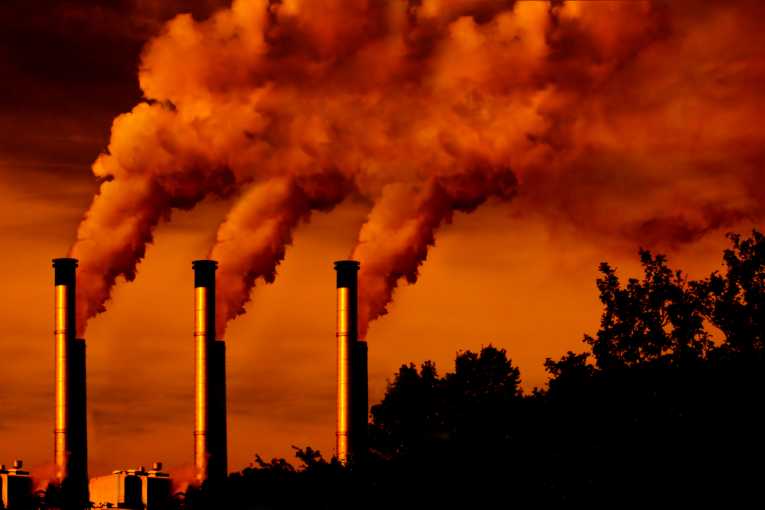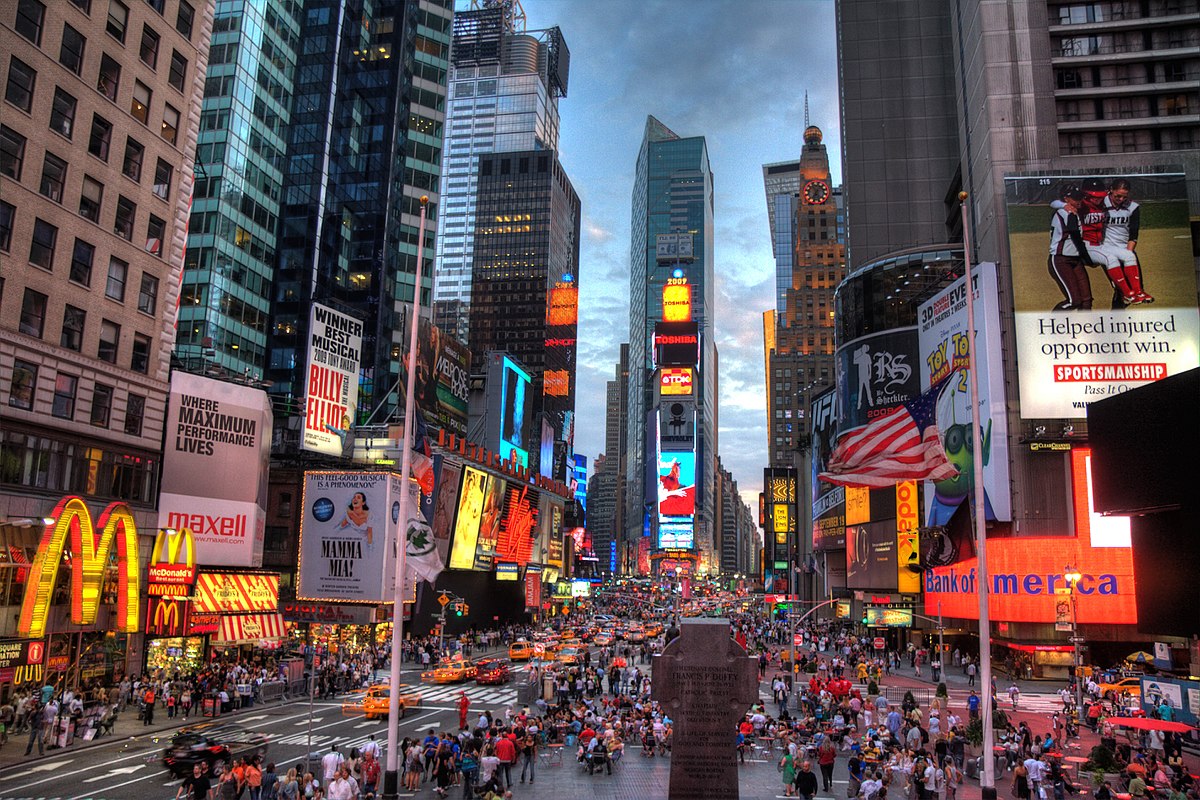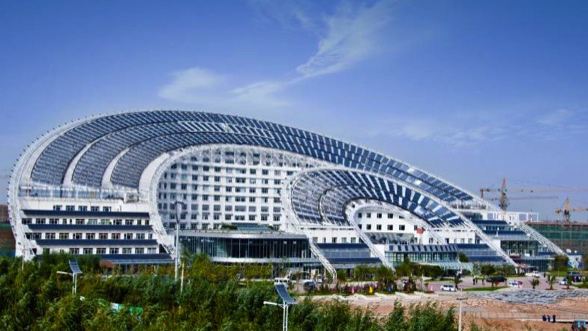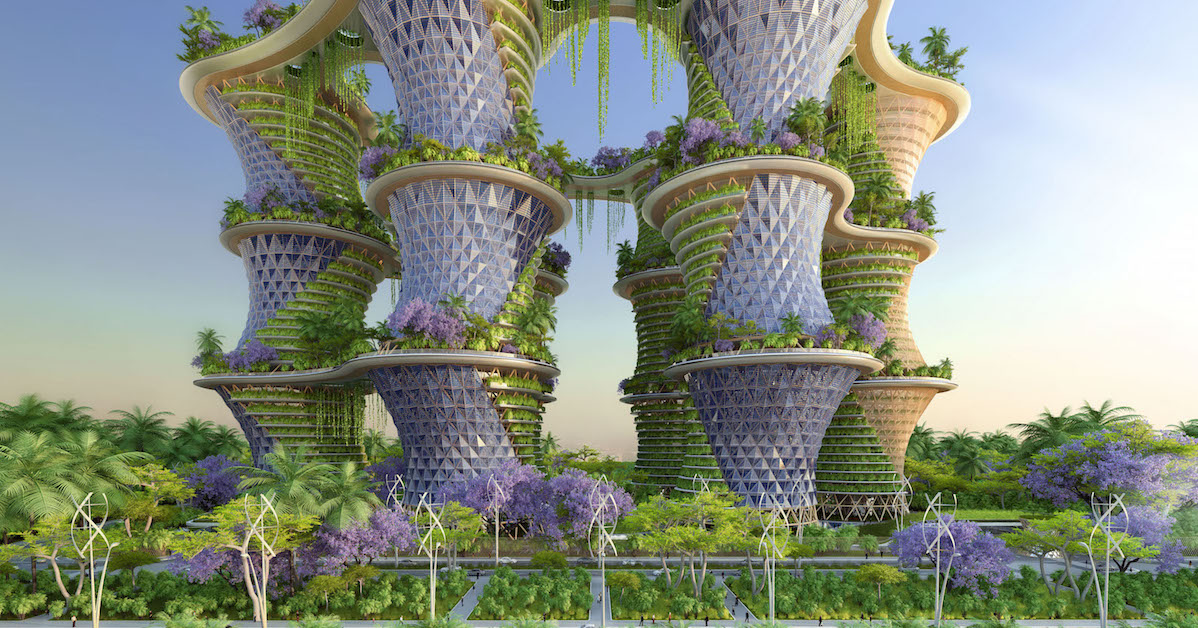Humanity, following the transition, will live in a civilization radically different from the one which gradually evolved during the eras of industrialism and consumerism. Our descendants will not live under a society characterised by exponential growth, industrial monocultures, consumerism, advertising, technological underemployment, freeways and supermarkets.
These very necessary adjustments to collective and individual facets of human life on our Earth today should have been undertaken already when it stood clear that we were using more resources than the Earth could renew, back in the 1970’s and 1980’s. Our usage of the planet’s resources have only increased since that time, showing that while we have been able to curb particle emissions and prevent an ozone crisis, as well as made great progress in terms of renewable energy sources. Yet, in terms of resource usage, especially regarding soil erosion, deforestation, groundwater depletion and surface exploitation, all the trends show an increased grade of deterioration.
The Transition is not about creating a Utopia, it is about creating a sustainable future for humanity. Some aspects of it will be painful and protracted, but the alternative to the Transition is not our current way of managing resources and the lifestyle and values it entails, but something which a majority of humanity would very much like to avoid.
A Sixth Mass Extinction event, resulting in a loss of complexity for the human civilization, resulting in a domino effect of crises which very well could destabilise even the most developed regions of Earth. Reality itself is urging us to adjust, to undergo a Transition, and the longer time we wait, the higher the price will be.
This article will describe what the Transition must be in order to be efficient, and also identify the key areas which will be affected.
Summary
- Large-scale cases of environmental challenges can be defined into two categories – qualitative and quantitative.
- Qualitative challenges can be partially solved by ceasing certain practices, quantitative challenges require a much deeper transition.
- The five big challenges, anthropogenic climate change, soil erosion, freshwater depletion, and the destruction of oceanic and continental eco-systems, are all caused by a dependency on exponential economic growth.
- The first step towards solving that problem is the abolishment of fractional reserve banking and possibly the elimination of interest.
- Anthropogenic climate change will be tackled by phasing out fossil sources of energy and the meat industry, and by the creation of carbon banks by global reforestation efforts.
- Industrial monocultures would need to be gradually but quickly replaced by a combination of several different types of farming – urban gardening, agroforestry, kelp farming, underground farming and aquaculture.
- We need a circular economy with strong aspects of a blue economy – i.e an economy where we minimise and optimise production.
- Energy Accounting or a system equivalent to its goals will most likely incentivise the necessary behavioural shifts, and can be useful as an alternative market mechanism.
- Another way of shifting is through setting up centrally managed transition plans, employing AI and superior computing systems to better access information.
- A part of such centralised measures would be to mass-mobilise the labour surplus in certain key areas, for example building sea walls to shield vulnerable lowlands.
- It is also essential to support and organise de-centralised grassroots initiatives on the local and regional levels in their attempts to foment the Transition.

Qualitative vs Quantitative Challenges
There could be said to be two kinds of environmental problems, those which are derived from the emission of certain substances into nature. Fossil-bound carbon dioxide, ozone and particle emissions into the atmosphere, heavy metal, synthetic chemicals, medicines and radioactive materials leaking into water reservoirs, seas and soils are example of qualitative challenges, which (mostly) can be solved by better regulations, by banning and by clean-up efforts. These problems (apart from climate change) can be addressed without challenging the foundations of our current civilization.
Quantitative challenges, on the other hand, are not possible to be addressed with these same tools, since the issue is not what substances we use, what emissions we leak or how we pollute, but rather how large volumes we are exploiting, how much surface we are occupying and in what manner we are occupying it. Often, these quantitative challenges are massively increasing the scope of the qualitative challenge. For example, one gasoline car would not affect the CO2 levels very much, but billions of cars can have a profound impact.
Three examples of environmental devastation of a quantitative nature are the huge industrial monocultures, where between a third and half of the world’s land usable land surface is utilised in the production of singular crops, the logging industry where forest plantations are crowding out natural woods and preventing the forest floor from recuperating and finally the trawling industry, which has devastated oceanic eco-systems.
While qualitative problems could be partially addressed by technological development, efficiency increases due to advances in tech generally tend to have an opposite effect on quantitative problems, since such introductions generally 1) decreases the cost of the exploitation process and therefore 2) decreases prices which leads to an increased consumption which massively increases the devastation of the environment. This tendency is known as “Jevon’s Paradox”.
In order to address this inadequacy, we must change the way the socio-economic system operates. This is the first aspect of the Transition.

The Impetus of Death must be broken
Money today is created through the process of Fractional Reserve Banking, where the same reserves are lent several times to different debtors, who then are expected to pay back the same money with interest. This interest must be created by the economy, thence there is a need for exponential economic growth. Economic growth means that the total amount of consumption constantly must be increased, and that the economy should conform to the demand of the consumers (if people for example want hamburgers, they should have hamburgers by the grace of the invisible hand).
During the 1920’s and 1930’s, this system was cannibalising itself, mostly because productivity grew faster than consumption, leading to deflation and mass unemployment. Following the Second World War, which partially was a reaction to the Great Depression, a new system was devised. Bretton Woods was a minor adjustment (and lasted only for a quarter of a century) in comparison to the cultural and institutional changes. The introduction of comprehensive welfare states, easy credit and consumerism as the foundation for human identity were facets gradually introduced to ensure that the Great Depression did not repeat.
This move from “Protestant Ethics” to “Hedonistic/Consumerist Individualism” has atomised the western individual and turned the meaning of life from meaningful participation in a society into the fulfilling of certain archetypes designed by media, for example through TV shows such as “Friends”. Advertising in our civilization is designed to appeal to sexual and sensual subconscious desires, thus aiming to manipulate people to demand things which they would not otherwise demand.
Every year, the leaders of the world are meeting at several summits to discuss how to keep the wheel of global consumerism rolling, while the Earth is grinded underneath its relentless onslaught. Often, at the same summits, they also aim to solve the planet’s environmental problems, so “economic growth would not be compromised”. The “bad environmental effects” must be isolated from the “good economic system”. From our point of view, the current system is designed to incentivise people to destroy the foundations for a future human civilization, in short to do like the Titan Chronos and consume their own children – an Impetus of Death.
In our view, it is absolutely necessary for a serious Transition to address the very unsustainability inherent in our monetary and financial systems. In short, we cannot seriously claim to aspire for sustainability unless we seriously consider shutting down the engine which is driving forward both climate change and biodiversity loss.
There has been quite a buzz about the emergence of the Sharing Economy, which indeed is spreading like wildfire. However, given that car sales and traditional means of conducting travel have not decreased, one has to come to the conclusion that the Sharing Economy mostly is growing amongst the ranks of the growing “Precariat”.
These are the necessary changes which we must voluntarily and enthusiastically undergo if the Transition even should become possible.
- Fractional Reserve Banking must be abolished, possibly replaced by Positive Money before transitioning towards Energy Accounting or another system designed to fulfil the same goals as Energy Accounting.
- It is advisable that advertisement in public spaces should be restricted, since it actively tries to manipulate people’s preferences against their explicit consent (people often have little choice but to go to urban centres).
- The externalities must be included into the price mechanism, because currently the market mechanism where only supply and demand are taken into account is de-facto subsidising environmentally hazardous and destructive products and practices. Possibly, this could be realised through the introduction of a new system, like Energy Accounting which is designed to measure the cost not only of extraction but also of restoration/compensation of areas affected by environmental degradation.
- There must be made a comprehensive study of how much resources we may harvest from the Earth each year, which would become the basis for a global ecological budget ceiling.
The important thing is not that these suggested reforms are introduced, but that reforms are introduced which are curbing the excesses which these suggestions are intended to address. If we desire a sustainable civilization for the future, we must also desire to stop the need for continuous exponential growth. Not to say that growth will be banned, but growth in the future must rather be incidental in relation to technological development, rather than – as we argue it is today – a compulsion.

Where we are going in the right direction
In terms of renewable energy, we are currently moving in the right direction, though the efficiency of certain types of renewable energy can be rightfully criticised. One aspect which we find very positive with renewable sources, is that they can be utilised to democratise the production and distribution of electricity and heating, namely that communities themselves can take control over their own means of generating energy, which really provides a foundational basis for a deeper and more tangible democracy.
The problem is that while renewable sources of energy are definitely growing in usage as a share of the world’s energy production, there is no sign in terms of absolute numbers that non-renewable sources of energy are being phased out, rather they do not grow at the same rate as before. The recent drop in oil prices can be seen as a combination of the increased profitability of renewables, but also that the previous higher prices stimulated the development of alternative forms of generating crude oil, such as utilising oil from the tar sands (and devastating ecosystems on the North American continent).
Thus, moving in the right direction does not mean moving away from the wrong direction. Much like the issue with the Sharing Economy, the effect of renewable energy on the fossil industries are at the moment not very much hurting the profitability of the traditional Petro-based energy and transport system.
What must be done is to gradually make it more expensive for businesses and industry to operate under a regime where fossil-based fuels could be utilised, as well as incentivise a shift towards the utilisation of more renewable sources. Undoubtedly, it is so that the penalisation of fossil fuels would adversely affect low-income people who own (and often are dependent on) cars. The problem with these push’n’pull policies is not that they are too comprehensive and radical, but that they often are isolated in relation to the wider infrastructure and growth-related policies of countries.
Case in point, cities are still incorporating former farm- and forestlands in the outskirts to raise supermalls displaying a wide variety of shops, businesses and fast food restaurants. Around these supermalls, flat, grey deserts of parking lots are established – these places are intended for people to move by car.
In most western nations, owning a car is almost a prerequisite of being a part of the labour market, and thus even have access to the regular consumer economy. Thus, while half-hearted policies are introduced to shift the transport sector towards a non-fossil-based state, mass transit through privately owned or operated cars is still the model which urban planners aim for.
One area where we are not doing enough in relationship to climate change is in terms of reforestation, where most trends point in the wrong direction. Though the amount of woodlands in first world nations have grown during the 20th century, the loss of forests in the global south, in Africa, South America and South East Asia, has far exceeded what has been regained. Forests are crucial in stabilizing the planetary climate since trees live for centuries and store carbon dioxide which later can be deposited and returned to the soil. There needs to exist a conscious strategy to dramatically reverse the trend and increase the amount of forests on Earth…

The Big One: Agriculture
In our world today, monocultures have altered a considerable chunk of the land surface area, replacing vibrant, dynamic, naturally emerging ecosystems. Around 40% that is. The largest share of these farmlands are sustaining the needs for the cattle and dairy industry in terms of fodder, meaning that the meat industry is playing a significant role in the deterioration of the planetary land surface.
Highly competitive and efficient industrial monocultures are first of all very intense, the demands of the market rather than the rhythm of nature decides their yield, amplified by technology they deplete the soils and groundwater, and must rely on fossil-based fertilisers in order to function. They do still expand, especially in South America. Monocultures are also excessively vulnerable, because ecosystems supporting one crop are not ecosystems but rather linear, artificially created and maintained systems in constant dependency of constant human intervention. This massive replacement of ecosystems with linear systems is a major instigator in the current massive losses in biodiversity endured by the biosphere.
That would in itself be enough of a motivation to reverse the trend, but there is also the aforementioned situation where we would need to engineer a global reforestation, which would mean a reduction of other types of lands. The most natural choice is to reduce the area covered by monocultures.
If we embark on that course, we must be fully aware that this part of the Transition is undoubtedly the most large-scale, the most perilous and one likely to take decades of arduous labours. Though it is well-known that half of the world’s food yield is discarded, and that a significant share of the agricultural production is directed towards sustaining the meat industry, shifting the food production must be done in a meticulous, systematic and gradual manner.
The reason why is of course that the highest priority must be to ensure food accessibility for human beings. If we for example decide to shift 75 000 sqkm of grain fields for a restored forest, we must ensure that we in the same replace it with other, less ecologically damaging forms of agriculture to the point that the same level of nutrition will be yielded. The main challenge is thus that the Transition in terms of phasing out industrial monocultures would also need to involve other territories than those directly affected by the shift, in order to not cause a scarcity of food during the Transition.
When we make this shift away from monocultures, towards more sustainable types of agriculture, we must remember that no matter what economic activities we choose to do, we will damage the environment. That is inevitable. What we within the EOS always have desired is for us to try to harm the ecosystems as little as possible, while still being capable to provide decent lives for the 7-9 billion people living on the planet. So the transformation of agriculture will be a process which would probably take two to three decades, and which probably will never be completed, at least not for the continuation of this century, especially as a considerable chunk of the monocultures would still need to be operational. Neither are all monocultures in themselves problematic, for example grandmother’s potato field is not an environmental problem on the same scale as a sea of corn, soybeans, oil palms and wheat.
One positive aspect of replacing industrial monocultures with other forms of agriculture is by diversifying our sources of food, we increase our resilience and become less vulnerable to parasite infestations or crises sparked by climate change.
Before describing in turns some of the possible types of agriculture which we can introduce at a large scale, we must not omit mentioning one of the foundational characteristics of the agricultural systems of the Post-Transition Era, especially in contrast to the linear, Ricardian logic of the current system. The agriculture of the future will be more dispersed, de-centralised and often small-scale than today, and a significant share of the population – maybe up to two thirds – will put a part of their time into growing their own food.

A much larger share of the adult population, close to 100%, will have the knowledge about how to do it. Each settlement and city will have the capability to feed itself, even if food will still be transported between regions and continents (though that will be slightly less frequent under a system where all environmental costs are factored in). One can imagine that this kind of bonus farming would be organised by neighbourhoods or house groups, but there would most likely be as much individual farming units.
Here are some of the forms of farming which will become more widespread at the expense of industrial monocultures.
- Agroforestry will most likely be a widely used adaption, because it is a compromise between a forest region and a farming region, mixing trees, fruit plantations, crop rotation and a variety of different species within flourishing neo-forests, aiming to construct self-sustaining ecosystems.
- Kelp farming does indeed have a potential, both in near-coastal shelves, lakes (natural and artificial) and on land, in specific facilities, and will most likely become a form of staple food in several regions.
- Vertical farming can be utilised as a more effective way of growing crops in terms of sunlight, in northern and southern regions of the sphere. Vertical farms will most likely both pop up in urban areas and in the countryside, providing enormous greenhouses which can feed thousands, often employing aquaponics, hydroponics, aeroponics and other methods of farming considered alternative today.
- Underground farming can become a popular option in terms of growing mushrooms, which to a certain extent can replace meat as staple food.
- Platform cities supporting seasteading could also be utilised to create new land surface, interlinked hexagonal platforms supporting industrial monocultures, which would definitely not affect the existing land surface of the planet.
- Lab meat should definitely be explored as an alternative to regular meat, but our strategy should not rely on its introduction to the market.
- Absolutely necessary are also millions of small family farms, voluntary farming collectives, portable mini-greenhouses and all the multitude of potential grassroots initiatives, including even guerrilla gardening.
The two main necessities for having a civilised human society are security and food accessibility. During the Transition, changing the way we deal with food will be the absolutely most important determining factor.

The future of human habitation
Another trend which must be broken and reversed, is the tendency to gather humans into larger and larger metropolises, which necessitate global trade routes and the transformation of entire regions into harvest zones for the needs of particular urban sprawls.
With the Transition, we will most likely see a reversion of this trend, mostly because 1) exponential economic growth must be curbed and directed towards the needs of the human species, i.e the Transition itself which will lead to 2) the reduction of a significant amount of the consumerist-oriented economical activities associated with late 20th century urban life and 3), the advent of a new structure of employment could see a migration away from cities, which could have both positive and negative effects.
Moreover, buildings erected since the dawn of the 20th century would need expensive maintenance or demolition. This includes famous landmarks like the Empire State Building, which will need to be thoroughly renovated or demolished. Residential urban zones also have a date of expiration, and then we need to discuss what kind of structures should be raised. This process would most likely be a slow and gradual one, new buildings will be raised when old ones are demolished.
Of course, one of the aspects of the Transition is the expected rise in sea levels, which could reduce habitability in low- and wetlands, where most large cities on Earth currently are located. Thus, it is not impossible to envision that a lot of cities will be moved or abandoned and mined for resources in the future.
What must be avoided at all costs, is to construct space-ineffective dwellings, case-in-point being the Suburbia model, developed in the United States during the late 1940’s and then exported to the world. This model, reliant on asphalted roads, huge parking lots and a massive usage of surface area, must be severely discouraged.
Rather, though we do not know how the future looks, we can imagine it would consist of colony-housing, where several dwellings share common showers, living rooms, kitchens and gardens. One could also imagine modular living units which can easily be 3D-printed and assembled by communities, in case a village must be expanded.
Another alternative is arcologies, huge self-containing structures housing thousands of people, as well as semi-urban centres, educational, healthcare-related and neo-industrial facilities. Such structures gathered next to one another could become the closest equivalent to mega-cities today, and would become hubs for smaller settlements.

This vision of the future can be panic-inducing, but even if it comes to be so, there would probably be fewer large cities in the Post-Transition Era. The reason why most people cannot live in villages, or why less advanced technology would not be an option (though voluntary low-tech communities will undoubtedly exist on the Earth as well) is simply because the Transition as we are envisioning it is for the sake of humanity – all the billions of individual human beings who compose our species that is. Returning to a less advanced state will not only doom billions to deprivation, but also potentially kill hundreds of millions. Such a transition is not deemed as acceptable by us.
Of course, the urban, infrastructural transformation is going to be a slow process, which would be locally and regionally directed and consist of thousands of compromises which would seek to preserve cultural heritages and treat local populations and cultures with respect.

An era of Mass Employment
The Transition will be a period of great sacrifices and collective effort, but there will also be positive side-effects.
One of the prevalent visions of the future is one where mass unemployment and underemployment are spreading due to automatisation and the ascent of AI and robotics. We can see this trend already today, where the new work opportunities for many segments of the adult population consist of uncertain part-time jobs and the total amount of work hours have decreased. Many of these new professions have a dubious or overtly negative impact on the health of the community.
The Transition will likely, despite spelling the end of several industries, usher in an era of mass mobilisation and full employment, simply because every capable adult will be needed. Of course, a substantial of the practical field work will be taken care of by machines, but by their side hundreds of millions of human beings will be tasked with building up the foundation for soil and freshwater recovery, surveying local ecological situations, recycling material from outdated housing and non-renewable power plants as well as creating new and ecologically neutral or at least less damaging industrial facilities.
As a part of the Transition, social sustainability is crucial. Many areas of the world currently experience collapse-like situations, and suffer from ethnic and tribal conflicts. In terms of social sustainability, the armed combat must be ended, either by peace negotiations or by – in the worst case – intervention. It is absolutely crucial that war should be minimised during the Transition, if for nothing else then simply because Humanity does not afford wasting its time, even winners in a war will become losers if the Sixth Mass Extinction Event moves to fruition.

It is a testament to the priorities and culture of our age that arms dealing, pornography and drugs are some of the largest economic activities.
During the Transition, instead of preying upon the weak, the productive and intellectual capabilities of Humanity will be directed towards raising up impoverished regions, combat drought and floods, provide the darkest parts of the world with electricity, filters and sewage systems, clinics and schools. Millions of teachers, caretakers and nurses are needed to transferred to distant continents.
It is not a matter of the White Man’s Burden, it is not a matter of the First World and the Third World any more, but a matter of Humanity helping itself. Thus, those tasked with the leadership of instituting social sustainability will primarily be people living in the affected regions themselves, people with integrity who have experience coupled with knowledge of how to adapt ecologically sustainable technologies to local conditions.
The Transition will demand Humanity to shoulder a responsibility, but this responsibility is the most meaningful thing we will ever endure, and we will endure it together. Ultimately, the Transition will – if successful – result in a world more unified and peaceful than ever before.
Summary – a new dawn will arise, if you want it

No matter whether you love or dread the thought of the Transition, the truth is the same no matter where you are, what you say or how you live – our current civilization has been designed on an unsustainable foundation, and we need to dismantle that foundation while raising a new, sustainable one, while not only preserving democracy and human rights, but to expand them, build upon them and spread them.
What we need to do, if we want to summarise the Transition is, yet again:
- Replace a financial-monetary system built on debt and interest with one built on the basis of physical reality, internalising the externalities.
- Recycle and reuse as much matter as we are able to sustain our needs.
- Phase out fossil fuels, replace them with renewable sources.
- Plant trillions of trees.
- Replace a significant part of our industrial monocultures with other forms of agriculture.
- Phase out most of the meat industry.
- Create an integrated, intelligent and sustainable infrastructure system.
- Mobilise all resources in order to achieve aforementioned goals.
When does it begin? Where does it begin?
You can start it tomorrow! Focus on spreading information about the necessity of the Transition, out towards the world, or towards your specific community, your friends and relatives. Organise yourselves to find ways to manifest the Transition in your area, by growing food, producing your own electricity, or in other ways having a positive impact. Communicate with other groups, learn, spread, repeat.
This is the most important struggle of the 21st century.
The Earth Organisation for Sustainability is willing to cooperate with and support all groups aiming for a sustainable future, aiming for the Transition. Humanity has all the potential to achieve all its aspirations, but we must get our act together and save the biosphere, to save our civilisation, to save ourselves.
The last eight to ten generations of our species have created a mess, not out of malice but of ignorance and short-sightedness. If we are going to succeed, we need to mobilise all our positive energies into the Transition, to create a new future for Humanity.
The EOS has established a virtual infrastructure on Facebook to facilitate this organisation. It is still in its infancy, but it is going on through this group.
You are welcome to join!
